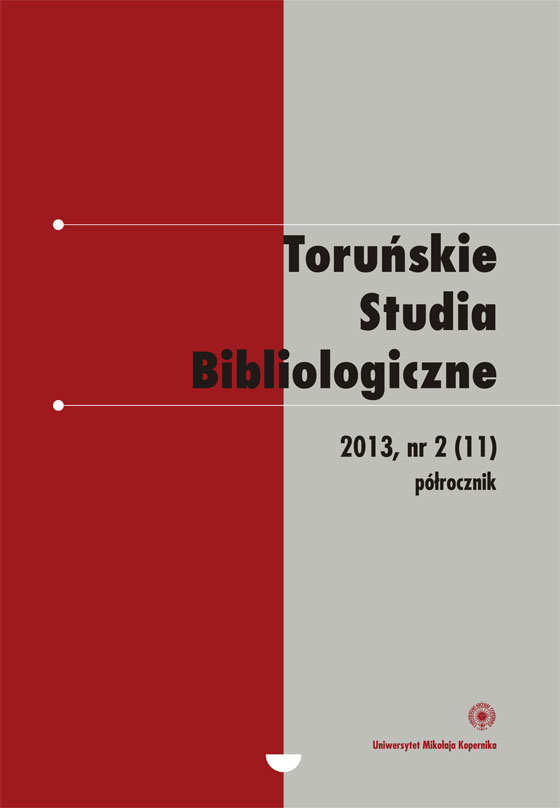„Walka z lekturą zakazaną”. Bibliologiczne spojrzenie na dyskusje wokół książki „zakazanej” i jej wpływu na dzieci i młodzież w końcu XIX w. i na poc
"The fight against forbidden books". A bibliological insight into the discussion regarding ”forbidden” and ”harmful” books
Author(s): Grzegorz Nieć, Grażyna WronaSubject(s): History
Published by: Wydawnictwo Naukowe Uniwersytetu Mikołaja Kopernika
Keywords: „książki zakazane”; 1918−1939; autocenzura; recepcja literatury; typologia; XIX−XX w.; “forbidden books”; 1918−1939; reception of literature; self-censorship; typology;19thcentury; 20th century
Summary/Abstract: Polish librarian studies and readership studies, which were developing in the interwar period, were accompanied by the reflection upon the influence of literature on the upbringing and attitudes of young people. Bibliologists, literature experts, sociologists and theologists, as well as publicists and moral authorities were adding their voices to the discussion, criticising the publishing assortment, education system, and the families for neglect. They were demanding a stronger control or even censorship, preparing lists of harmful titles and suggesting alternative, recommended ones. This discussion was taking place in the background of political disputes and social transformations. Every time real names and titles would be mentioned, belonging to all literary genres of that period. Besides the Polish and foreign literary classics there were mediocre crime and romance novels – often the choice was a subject of premeditated manipulation and a harsh and simplified judgement, in effect of which talented writers and poets of all literary periods were branded as pornographers, depravers and scandalisers. The authors would like to organise the terminology used, which is present, but not always consistent and consequent, and review the list of ”forbidden books” in the scientific works and Polish journalism of the end of the 19th century and the period 1918–1939; to suggest a typology which would take into account a book’s place in the literary culture as well as the type and level of its ”harmlessness”. These texts were not, after all, ”forbidden” in the legal sense and the harmlessness should be understood differently. We are dealing here mainly with the self-censorship of the teachers, librarians and priests, acting in accordance with a definite set of values. Many speeches were incidental, referring to a single or about a dozen titles; others were broader and detailed guides to the ”suspicious” spheres of literature, regarding which the dispute was brought up. The books were judged regarding their social, religious and political context. Examples of this type of censorship have been accepted by some elites and sometimes also a big part of the society. Discussions and arguments which would seem to belong to the past, return and are often twice as strong as before.
Journal: Toruńskie Studia Bibliologiczne
- Issue Year: 11/2013
- Issue No: 2
- Page Range: 135 - 152
- Page Count: 18
- Language: Polish

